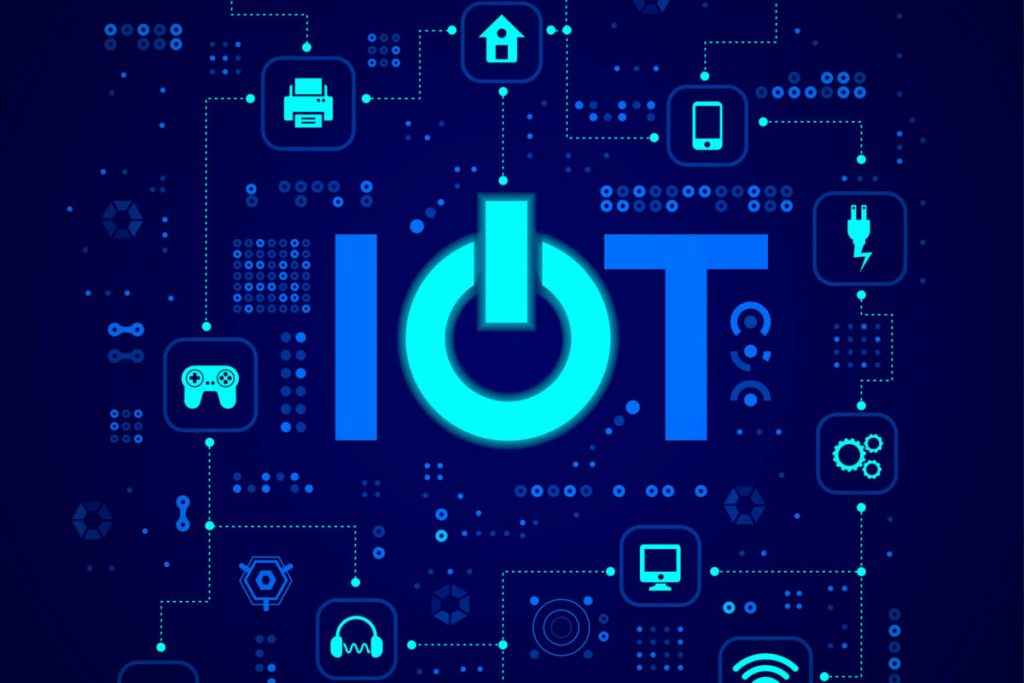In the fast-paced digital era we live in today, connectivity and communication are at the forefront of technological advancements. One of the most significant breakthroughs in this regard is the advent of 5G technology. This article will delve into the world of 5G, exploring its impact on various industries, its potential applications, and its implications for the future. Join us on this journey as we unravel the revolutionizing power of 5G.
Read More: 7 Cutting Edge Technologies That May Soon Be Making A Big Impact
Contents
- 1 Understanding 5G
- 2 The Evolution of Wireless Communication
- 3 Speed and Bandwidth
- 4 .Low Latency
- 5 5G in Telecommunications
- 6 Internet of Things (IoT) and 5G
- 7 5G in Healthcare
- 8 5G in Autonomous Vehicles
- 9 Smart Cities and 5G
- 10 5G and Augmented Reality (AR)
- 11 Cybersecurity Challenges
- 12 The Global Rollout
- 13 Future Possibilities
- 14 The Impact of 5G
- 15 Conclusion
- 16 FAQs
- 17 What is 5G technology, and how does it differ from 4G?
Understanding 5G
5G, short for the fifth generation of wireless technology, represents a giant leap forward in our quest for faster, more reliable, and smarter connectivity. Unlike its predecessors, 5G isn’t just about making your smartphone faster; it’s a transformative technology that has the potential to reshape industries and societies. To grasp its significance, let’s break down what makes 5G so different from what we’ve had before.
The essence of 5G lies in its incredible speed and bandwidth. It can deliver data at rates that were once inconceivable, reaching up to 10 gigabits per second (Gbps). To put this in perspective, that’s roughly 100 times faster than 4G LTE. This blazing speed ensures that you can download large files, stream high-definition videos, and engage in bandwidth-intensive tasks with unparalleled ease.
But 5G isn’t just about speed; it’s also about latency, or the delay between sending and receiving data. 5G technology drastically reduces latency, often to just a single millisecond. This near-instantaneous response time is crucial for applications that require real-time interactions, like augmented reality (AR), virtual reality (VR), and autonomous vehicles. It’s this low latency that allows a surgeon in one part of the world to perform remote surgery with precision, enabled by robotic instruments connected via 5G.
Another fundamental aspect of 5G is its capacity to handle a vast number of connected devices simultaneously. This is a critical feature for the Internet of Things (IoT), where countless devices, from smart thermostats to industrial sensors, communicate with each other. With 5G, the network can accommodate these devices seamlessly, creating a more interconnected and intelligent world.
In essence, 5G technology represents a new era of connectivity. It’s not just about faster downloads; it’s about enabling innovations that were previously hindered by the limitations of older networks. Understanding the speed, low latency, and massive capacity of 5G is the first step in appreciating how it’s revolutionizing connectivity and communication in our digital age.
The Evolution of Wireless Communication

To truly appreciate the revolutionary impact of 5G technology, it’s essential to take a brief journey through the evolution of wireless communication. Each generation of wireless technology has built upon its predecessor, paving the way for the groundbreaking capabilities of 5G.
1G: The Birth of Mobile Communication
The journey begins with 1G, the first generation of wireless communication. Introduced in the early 1980s, 1G was a giant leap forward as it allowed for voice calls using analog technology. However, it had its limitations, with a limited capacity to handle calls and minimal security features.
2G: The Digital Revolution
The advent of 2G, or second-generation technology, marked a significant shift from analog to digital. This era brought us the introduction of text messaging (SMS) and allowed for more efficient use of the wireless spectrum. 2G was the foundation for the widespread adoption of mobile phones.
3G: Mobile Internet and Beyond
With 3G, the mobile landscape evolved further. This generation brought mobile internet access, enabling users to browse the web, send emails, and engage in basic online activities. The introduction of 3G marked the beginning of mobile broadband services.
4G LTE: The Era of High-Speed Data
4G, or fourth-generation LTE (Long-Term Evolution), took mobile connectivity to new heights. It offered significantly faster data speeds, enabling seamless streaming of high-definition videos, online gaming, and the proliferation of mobile apps. 4G laid the groundwork for modern smartphones and mobile applications.
5G: The Next Frontier
Now, we arrive at 5G, the fifth generation of wireless technology. While each previous generation built upon the capabilities of the last, 5G represents a colossal leap forward. With its lightning-fast speeds, near-instantaneous latency, and massive bandwidth, 5G is set to revolutionize not only how we communicate but also how industries operate. It’s the catalyst for the Internet of Things (IoT), smart cities, and innovations we’re only beginning to imagine.
In summary, the evolution of wireless communication has been a remarkable journey. From the early days of voice calls to the lightning-fast, data-intensive capabilities of 5G, each generation has paved the way for the next. With 5G, we’re entering an era of connectivity that will redefine industries, enhance our daily lives, and unlock a world of new possibilities.
Speed and Bandwidth
When we talk about 5G technology, two terms that frequently come up are “speed” and “bandwidth.” These two factors are at the core of what makes 5G such a game-changer in the world of connectivity.
Blazing Fast Speeds
One of the standout features of 5G is its incredible speed. In fact, it’s often referred to as “ultra-fast” for a good reason. 5G networks can deliver data at speeds of up to 10 gigabits per second (Gbps). To put this in perspective, downloading an entire high-definition movie on a 5G connection can take just a few seconds. This is roughly 100 times faster than what 4G LTE networks offer.
This blazing speed has transformative implications. It means that you can stream 4K or even 8K videos without any buffering. Online gaming becomes incredibly smooth with minimal lag. And tasks that involve massive data transfers, such as downloading large files or backing up data to the cloud, are completed almost instantaneously. In essence, 5G’s speed ensures that data-intensive activities are a breeze.
Vast Bandwidth
Bandwidth refers to the capacity of a network to handle data traffic. In the case of 5G, the bandwidth available is substantial. This wide bandwidth enables multiple devices to connect to the network simultaneously without causing congestion or slowdowns.
Imagine a highway with multiple lanes. The wider the highway, the more vehicles it can accommodate without traffic jams. Similarly, 5G’s vast bandwidth allows for a multitude of devices to connect simultaneously without compromising the speed or quality of the connection. This is particularly crucial in an era where the Internet of Things (IoT) is rapidly expanding, with countless smart devices requiring constant connectivity.
To sum it up, 5G’s combination of blazing fast speeds and vast bandwidth ensures that the era of waiting for downloads or experiencing lag during online activities is becoming a thing of the past. Whether you’re streaming high-definition content, conducting video calls, or utilizing IoT devices, 5G’s speed and bandwidth capabilities make everything smoother and more efficient.
.Low Latency
Discussing the importance of low latency in 5G and its implications for real-time applications.
5G in Telecommunications
How 5G is reshaping the telecommunications industry.
Internet of Things (IoT) and 5G

Examining how 5G is unlocking the full potential of IoT devices.
5G in Healthcare
Discovering the transformative impact of 5G on the healthcare sector.
5G in Autonomous Vehicles
Exploring how 5G is making self-driving cars safer and more efficient.
Smart Cities and 5G
Discussing how 5G is turning cities into smart, interconnected hubs.
5G and Augmented Reality (AR)
Exploring the synergy between 5G and AR for immersive experiences.
Cybersecurity Challenges

Addressing the security concerns associated with the widespread adoption of 5G.
The Global Rollout
An overview of the global deployment of 5G networks.
Future Possibilities
Envisioning the potential applications and innovations 5G may bring in the future.
The Impact of 5G
Now that we have a comprehensive outline of 5G technology, let’s delve into its profound impact on various sectors.
Enhanced Mobile Experiences
How 5G is transforming the way we use smartphones and mobile devices.
IoT Revolution
Exploring the expansion of IoT devices and their integration with 5G networks.
Healthcare Revolution
Discussing telemedicine, remote surgeries, and other healthcare breakthroughs powered by 5G.
Transportation and Logistics
How 5G is making transportation more efficient and safer.
Smart Cities of Tomorrow
Imagining the possibilities of fully connected and intelligent cities.
Entertainment Industry

The role of 5G in delivering high-quality streaming and immersive content.
Education and Remote Learning
How 5G is bridging the digital divide in education.
Environmental Benefits
Discussing the potential reduction in carbon emissions through 5G-enabled efficiencies.
Conclusion
In conclusion, 5G technology is not merely an upgrade in connectivity; it’s a revolution that touches every aspect of our lives. Its lightning-fast speeds, low latency, and expansive bandwidth open doors to innovation that were once unimaginable. As 5G continues to roll out globally, we can expect to witness groundbreaking developments in healthcare, transportation, entertainment, and more. The future is 5G, and it promises a world of endless possibilities.
Read More: IoT and Healthcare: Future of Medical Technology
FAQs
What is 5G technology, and how does it differ from 4G?
5G is the fifth generation of wireless technology, offering significantly faster speeds, lower latency, and greater capacity compared to 4G.
How does 5G impact the Internet of Things (IoT)?
5G enhances the IoT by providing the necessary infrastructure for a vast number of connected devices to communicate seamlessly.
Are there any health concerns related to 5G technology?
Extensive research has been conducted, and as of now, there is no conclusive evidence linking 5G technology to adverse health effects.
When can we expect 5G to be widely available globally?
The rollout of 5G is already underway in many countries, and it is expected to become more widespread over the next few years.
How does 5G contribute to the development of smart cities?
5G enables real-time data sharing and connectivity among various systems in a city, making it the backbone of smart city initiatives.



